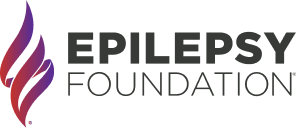Fires Febrile Infection-Related Epilepsy Syndrome

What is FIRES?
FIRES stands for febrile infection-related epilepsy syndrome. It is sometimes also called febrile illness-related epilepsy syndrome and was previously called fever induced refractory epileptic encephalopathy in school-aged children.
- It usually affects school-aged children with an average age of 8 years old. However, age can range from 2 years to early adulthood.
- Boys are slightly more commonly affected.
- FIRES affects a previously healthy child after a brief, nonspecific febrile (fever) illness, such as a cold or flu.
- Seizures typically start 24 hours to 2 weeks after the illness begins. Fever might not be present when seizures start.
- Seizures are usually focal (affecting one part of the body) but become more frequent with altered awareness between events. Seizures evolve to continuous or nearly continuous seizure activity, which is called status epilepticus. They respond poorly to most medications.
- The initial, acute phase of status epilepticus can last up to 2 weeks or longer.
FIRES is considered a subcategory of NORSE - new onset refractory status epilepticus.
How common is it?
FIRES is a very rare condition and affects approximately 1 in a million children.
How is it diagnosed?
The diagnosis of FIRES is made clinically, based on a careful history. Other treatable and non-treatable causes must be ruled out, for example infectious, alternative toxic, metabolic, and genetic causes of super refractory status epilepticus.
At present, there is no clear biomarker to diagnose this condition.
Common diagnostic tests include
- Prolonged EEG (electroencephalogram) confirms frequent seizures and may show specific patterns suggestive of FIRES.
- EEG patterns with FIRES may include delta brush, background slowing and multifocal spikes and sharp waveforms.
- EEGs are done to monitor and treat status epilepticus.
- Lumbar puncture (spinal tap) excludes brain infections, such as meningitis or encephalitis, or autoimmune disorders.
- Inflammatory markers may be tested in some special laboratories on a research basis.
- Blood tests rule out treatable metabolic disorders, like autoimmune thyroiditis, other autoimmune / antibody mediated encephalitis, disorders of amino acid metabolism, biotinidase deficiency or pyridoxine deficiency
- Genetic tests rule out specific gene mutations that may lead to prolonged or recurrent seizures, including sodium channel mutations (SCN1A testing), polymerase gamma testing (POLG), PCDH19, etc.
- MRI (magnetic resonance imaging) of the brain is often normal at first. Over weeks to months, there is abnormal signal and ultimately brain atrophy is seen.
- Rarely a brain biopsy might be performed to rule out infection or inflammation. However this is usually not required.
What causes FIRES?
The precise cause is unknown. The disorder is thought to be due to an overwhelming inflammation in response to a minor infection. Recent cases suggest that certain children may be genetically predisposed to develop this inflammation. Some inflammatory markers have been identified that may be useful to detect FIRES early in the future.
How do you treat FIRES?
There are no uniform treatment guidelines.
Drugs that might be used to treat status acutely include benzodiazepines (lorazepam, midazolam), barbiturates (phenobarbital, pentobarbital), anesthetics (ketamine), lidocaine, magnesium, etc. Experts are moving away from prolonged use of pentobarbital due to concerns about poor long-term outcomes. Instead, high dose phenobarbital may be a better option.
Most treatments have poor results in the acute phase. However the following treatment options have been reported in small case series:
- Ketogenic diet: Reportedly effective in up to half of cases to help break the status epilepticus
- Cannabidiol: Helped to reduce seizures in 6 out of 7 cases, but most were treated after the acute severe seizure period
- Anakinra or tocilizamab target the abnormal inflammation and have been reported to be successful in small groups of people. Further research on these compounds is needed.
Other therapies used at the same time as or after other therapies have been tried but have not been effective include intravenous immunoglobulin (IVIG), high dose steroids and plasmapheresis.
What is the expected outcome?
In the largest case series published to date that included 77 children with FIRES:
- Approximately 1 in 10 children died of complications from status epilepticus or ICU complications
- Nearly all surviving children have chronic epilepsy that will need medical management
- Developmentally, 3 in 10 children had normal or borderline cognitive function (with or without behavioral challenges)
- 3 in 10 children had mild-moderate cognitive delay
- 3 in 10 children had severe delay
Cognitive outcome at follow-up seems related to how long the burst suppression coma lasted and a younger age at onset of FIRES.
Resources
- Association Paratonnerre
- The NORSE Institute
- Online NORSE Family Registry
- Genetic and Rare Diseases Information Center (GARD) at the National Institutes of Health (NIH) on FIRES
- National Organization for Rare Disorders (NORD) on FIRES
- Oct 2020 updated report on NORSE written by Dr. Nicolas Gaspard and Dr. Lawrence Hirsch
- Sept 2020 podcast with ILAE features Dr. Lawrence Hirsch and Dr. Nicolas Gaspard discussing NORSE awareness and research
- 2020 Discharge Planning Guide
Resources
Epilepsy Centers
Epilepsy centers provide you with a team of specialists to help you diagnose your epilepsy and explore treatment options.
Epilepsy Medication
Find in-depth information on anti-seizure medications so you know what to ask your doctor.
Epilepsy and Seizures 24/7 Helpline
Call our Epilepsy and Seizures 24/7 Helpline and talk with an epilepsy information specialist or submit a question online.
Tools & Resources
Get information, tips, and more to help you manage your epilepsy.


